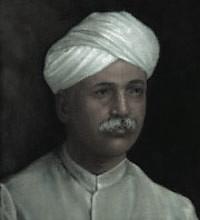अनपेक्षितगुरुवचना सर्वान् ग्रन्थीन् विभेदयति सम्यक्।
प्रकटयति पररहस्यं विमर्शशक्तिर्निजा जयति॥
|
|
… Professor Hiriyanna raised philosophy to a level beyond dialectics and minute differentiae, to a level guided by contemplation and communion with ultimate verities. Far from being mere cerebration, philosophy for him was an immediacy encompassing all levels of being, ranging from dialectical investigation to direct perception. There was thus coherence between his view of life and his preoccupation. This accounts for the rare serenity which marked him out. He never penned a line unless he was totally convinced about its authenticity and unless it was confirmed by his own experiential response.[2]
Pursuing values, says the learned professor, is a ‘quest after perfection.’ Let us understand the undertones of this statement.
A person so aligns his innate proclivity and cultivated competence to act as optimal supporting agents in the process of self-discovery. To this end, he seeks to actualise information at the levels of thought, speech, and action (tri-karaṇa), in all stations of life (catur-āśrama). Employing facts to analyse and values to synthesise, he marches forward on the path of self-perfection.
In this brief note, I examine the correlation between the pairs of fact-value and bhāva-rasa. The latter pair requires some explanation. By bhāva I mean emotion and by rasa, aesthetic experience. Bhāva relates to reality (bhū–sattāyām) and rasa relates to enjoyment (ras–āsvādana-snehanayoḥ). An impersonal, dispassionate, and disinterested contemplation of enduring emotions (sthāyi-bhāvas) is termed aesthetic experience. In other words, aesthetic experience is the method of purging emotions of the opacity caused by personal likes and dislikes (rāga and dveṣa) and thereby relishing them in a transparent state.
* * *
Let us, for the sake of analysis, consider the fact-value pair as representing Vedānta, the quintessence of all systems of knowledge, and the bhāva-rasa pair as representing Kāvya, the cream of all arts.
Fact and bhāva belong to the realm of the real—of how things are; value and rasa belong to the realm of the ideal—of how things ought to be. Facts are physical realities and bhāvas are emotional realities. Therefore, we apprehend them. On the other hand, values and rasa signify a state of sublimated reality. Therefore, we realise them.
* * *
The process of universalisation (sādhāraṇīkaraṇa) invests an emotion with the prerequisite necessary to elevate itself to the level of aesthetic experience. A work of art acts as a tool to bring about this process by fusing the causes and effects of enduring and transitory emotions (sthāyi-bhāvas and vyabhicāri-bhāvas).[3] Aesthetic experience is essentially a Summit Effect; typically, it does not last long (or long enough). Before fading, aesthetic experience reveals emotion, its chief constituent element.
Aesthetic experience offers unadulterated happiness; naturally, we long for it. And since we realise that emotion is the ladder using which we climb up to the level of aesthetic experience, we grow accommodative of it, consciously or otherwise. In other words, we become increasingly sensitive to our emotions. Enduring emotions are universal, and therefore this process of sensitisation has limitless application.
With time and effort, sensitisation hones our connoisseurship (sahṛdayatā) and helps achieve aesthetic experience quicker, whilst equipping us to involve in it for longer durations. Emotions lead to aesthetic experience and in turn aesthetic experience incentivises us to grow more accommodative of emotions. This is perhaps one of the plausible explanations of a rather cryptic statement in the Nāṭya-śāstra.[4]
With increasing accommodation (bhāva-carvaṇā-vyavadhi), the clarity of our emotional perception increases correspondingly. Ideally, there will come a point where an emotion is no different from aesthetic experience. This is only possible theoretically and cannot be actualised, for aesthetic experience is invariably dependant on Kāvya, an external stimulus.
* * *
Facts assist us in realising values. Values, in turn, induce in us a temperament conducive to grow respectful of facts. Having unalloyed respect for facts implies that we understand and accept them as they are. This means we realise values in a roundabout way, for value-consciousness is nothing but a contemplative understating of the essential nature of things (vastu-sthiti or yathārtha-svabhāva). Simply put, one must utilise all available resources to discover the ultimate reality. To phrase the same in the idiom of Advaita-vedānta, one should use avidyā to discover brahma. Optimal usage of the resources catalyses the process of value-realisation and makes it long-lasting. Practically, the idea is to transform karma into karma-yoga and subsequently, līlā. Persistent involvement in an activity of one’s liking is likely to nurture adroitness and, eventually, make the process thoroughly effortless and enjoyable. If one can do this by relinquishing the fruit of activity or being unattached to it, karma metamorphoses into līlā. The objective of the activity, then, will only be the pleasure derived from the process.
* * *
The concepts that incentivise us in Kāvya and induce in us a heightened state of accommodation in Philosophy—universalisation (sādhāraṇīkaraṇa) and Self-identification (ātmaupamya), respectively—help transcend the ego by offering a true insight into the fundamental nature of things. Intense, unflustered enjoyment polishes connoisseurship, which in turn bolsters universalisation. Similarly, dedicated, disinterested activity assists in Self-identification.
Facts and emotions that are initially known lead to values and aesthetic enjoyment that were hitherto unknown. Upon having a glimpse of values and aesthetic enjoyment, one begins the process of achieving communion with these ‘ultimate verities,’ because every glimpse of the ideal satisfies the ego to a small extent.
* * *
Owing to personal propensities and other factors that condition personality, a person develops a liking for a specific subject, engaging with which satisfies his intellectual appetite and brings him unbounded happiness. If he understands that subject at the level of details and philosophy—i.e., if he is both a tala-sparśī and pāra-dṛśvā—its value reveals itself to him. The person, then, understands all other subjects in the light of this value-understanding, for one can never endeavour to know everything at the level of details. Bhagavān Patañjali probably had this in mind in defining a śiṣṭa as “one who gains mastery over any one subject.”[5] On the other hand, if the subject of a person’s interest is Philosophy—which, as we observed previously, is the study of values—he gains instant access to the heart of all other subjects, bypassing the overabundance of data-points that characterise them.
* * *
The distinction between facts and values is as seminal as the one between puruṣa-tantra and vastu-tantra identified by Bhagavat-pāda Śaṅkara.[6] Prof. M Hiriyanna deserves our unmixed gratitude and reverence for this extraordinary revelation.
भूयिष्ठां ते नम उक्तिं विधेम।
[1] Ref: Hiriyanna, M. Indian Conception of Values. Bengaluru: Wise Words and Prekshaa Pratishtana, 2017
[2] Ref: Ibid, p. 7 (preface)
[3] Vibhāva-anubhāva-vyabhicāri-saṃyogād rasa-niṣpattiḥ (Nāṭya-śāstra, prose after 6.31)
[4] Na bhāvahīno’sti raso na bhāvo rasavarjitaḥ (6.36)
[5] Kasyāścidvidyāyāḥ pāraṅgatāh (Mahā-bhāṣya for Aṣṭādhyāyī, 6.3.109)
[6] Ref: Brahma-sūtra-bhāṣya, 1.1.2










































